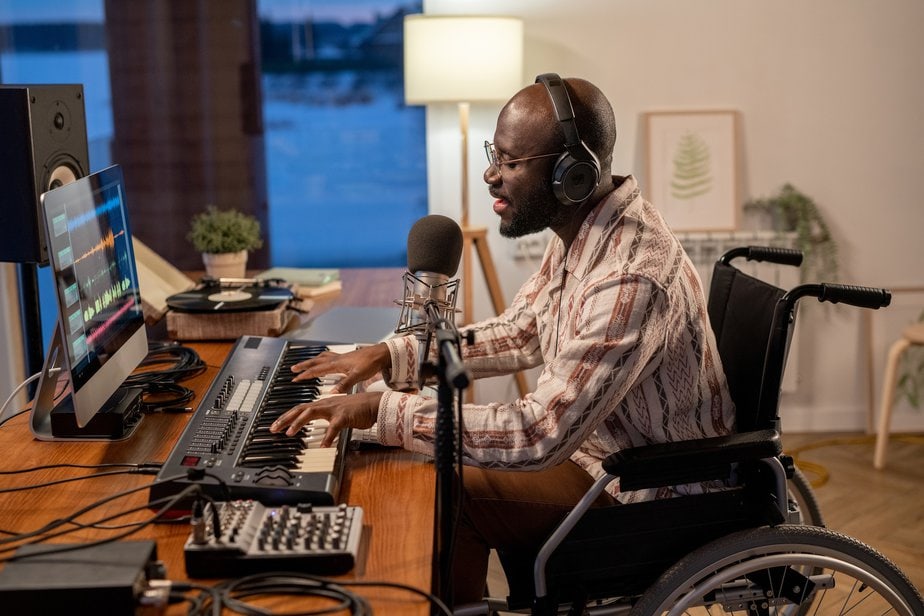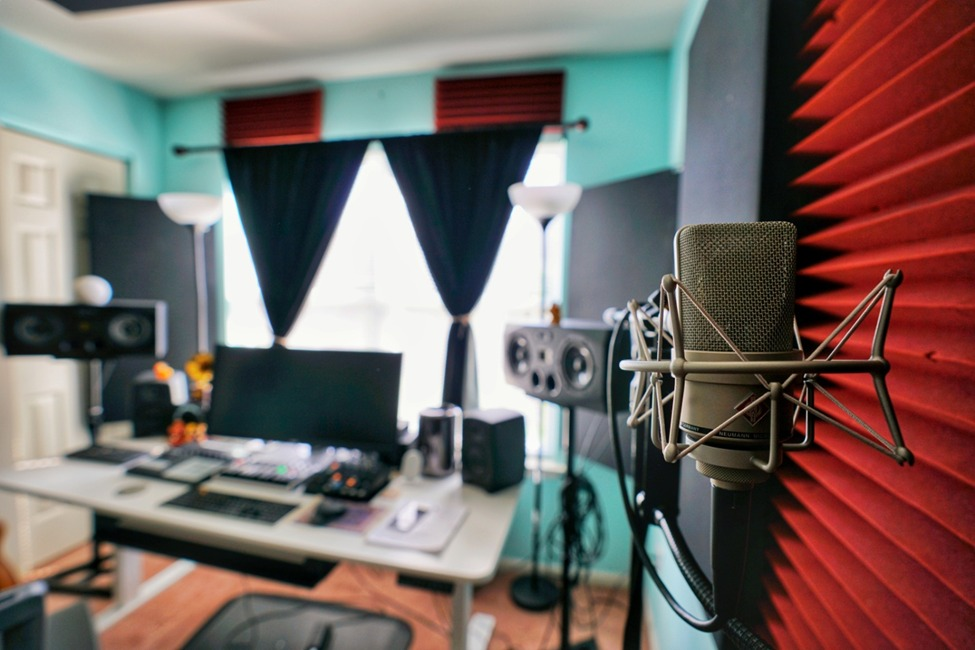By designing a home recording studio in a DIY fashion, you too can create high-quality recordings.
When establishing a dedicated space for recording, there are several tips to keep in mind. The most important include choosing the right room, as the majority of homes are not designed for the purposes of home recording.
They lack varied surfaces and high ceilings that are commonplace in professional recording studios. However, some rooms work better than others for recording. If a possibility, pick a room with very few windows, a solid door, and carpets on the floor. You will need to find a space that is able to eliminate echoes.
You can always edit digital reverb in recordings, but it’s almost impossible to remove live reverb that is unwanted.
How do I set up a simple home recording studio?
Walk-in closets work perfectly as recording booths, with the rest of the space as a control room. Hanging clothes work well to absorb sound, and the door prevents outside noises from bleeding in.
Fiberglass panels built yourself will save you a ton in the long run. You need to be using as neutral of a space as possible, no matter the case.
Room soundproofing is necessary to deaden reverb and enhance the acoustics. Foam sound absorbers can be bought to hang on walls and capture echoes. Bass traps are unique sound absorbers designed to sit in corners. Purchasing enough sound absorption for your studio will run about $300. However, lower-grade fabric and foam can work well for soundproofing as well.
As most of your time will be spent in a studio at your desk, you should invest in a chair and desk that has appropriate ergonomics for such hours of recording.
What do I need to set up a recording studio at home?
After choosing the proper room for your home studio, you must equip your space with the right equipment.
1. Computer
A personal computer serves as the recording process hub. You should not rely on a smartphone or tablet as your primary interface. You need a desktop.
2. Audio Interface
Digital audio workstations, also known as DAWs, are software that powers your recordings. Popular brands, including Pro Tools, Cubase, Digital Performer, Logic Pro X, Reason, and Ableton Live, are solid options. The majority of these can run on either a PC or Mac, but certain programs are exclusive to specific operating systems. Many free programs are available, including Audacity, GarageBand, and Sonar Cakewalk.
Furthermore, you’ll need a digital audio converter or interface to convert analog signals into digital files your computer can communicate with.
3. Microphones
Properly building home recording studios requires an investment in several different microphones. Condensers are made with small and large diaphragms, which are able to record almost any instrument. However, you need to invest in dynamic microphones as these are utilized for high-output instrumentation, such as guitar amps and drums. Lastly, ribbon microphones enhance the quality of vocals, electric guitar amps, brass instruments, and acoustic guitars.
4. Studio monitors
Similar to microphones, you’ll also need reliable stands, XLR cables, and pop filters as accessories. Preamplifiers are one of the most underrated forms of equipment. They sit between a digital audio converter and microphone, designed to enhance character and warmth to recordings.
The majority of sound engineers respect them as essential tools for instruments and vocal recordings. Certain microphones are dead unless they are connected to a preamp.
You can have the best preamps and microphones, but it will not mean anything without good quality monitors and headphones.
5. MIDI Keyboard
Mini electronic keyboards, also known as MIDI keyboards, are essential home studio tools that do not require an advanced understanding of pianos in order to use them. Consider them as a tool for testing various sounds and including virtual instruments directly into your production.
Many things are possible with MIDI keyboards, as they essentially allow you to soundtrack a full song using Virtual Studio Technology (VST) and sample library instruments.
6. Headphones
Not every headphone is made equal, and in the same way you would start digging for sweat-resistant brands that aid you during a workout or run, you’ll need a pair of closed-back headphones during the recording process. This minimizes bleeding from the audio you’re tracking.
Listening tools extend to Ear Training Software as well, which helps you to identify faults in your recordings. Having the right musician’s ear is not the same as having a quality sound engineer ear. Musicians must learn to recognize chords, notes, and intervals. However, sound engineers must learn to recognize frequency bands.
Until your ears develop the proper grasp of such a skill, you’ll never truly know if the quality of the sound is going to be good or not.
Training your ears from the beginning with quality Ear Training Software is necessary to expedite the speed of your improvement.
7. Conviction and creativity
No matter the quality or expense of your equipment, your music will never evoke a spiritual connection with others if it does not have soul put into it.
The only thing that truly matters is your performance and whether or not your play is honest, believable, and authentic.
Promoting Your Music
Independent artists looking to break into the business may not have the resources to grow a fan base that many industry leaders do. Yet, the modern digital landscape will make it easier than ever for people to get their music heard.
Services such as Managergram offer you the ability to purchase likes on Instagram posts automatically. Others, like Musicvertising, offer a targeted promotion on platforms like Spotify with programmatic native ads.
Developing an online presence is critical to engage with target audiences. This means creating video content on music-driven applications to incorporate song clips. Electronic press kits are digital resumes that essentially include all of the promotional materials possible to send to influencers in the music industry. It provides record labels, producers, agents, venue bookers, and mass media with all your information.
Finally, establishing a band or artist website to provide fans with a place to discover your existing catalog is necessary as well.

